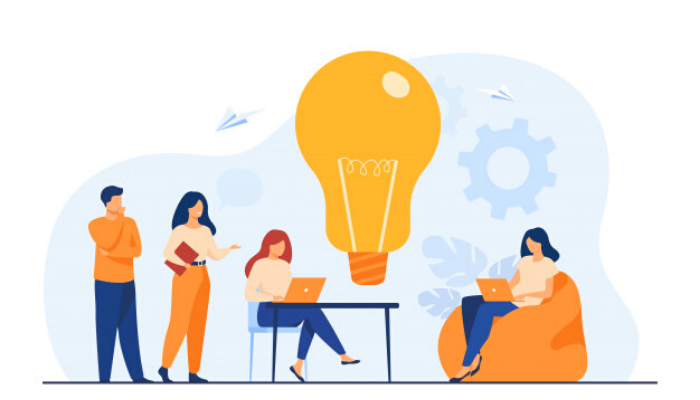Diversity And Inclusion: A Case For Cognitive Diversity At The Workplace

Written by: Moksha Sharma
When organisations think of diversity they tend to define it in terms of demographic factors such as – age, gender, religion, disabilities, and language. For many companies, diversity has been limited to increasing the numbers of under-represented minorities on the payroll. However, increasing diversity based solely on demographic factors and not incorporating intellectual alignment, can backfire and have a negative impact on the organisation’s performance and can create tensions within the team.
Social Categories and D&I
Studies on diversity in teams in the recent past have shown that surface-level social-category differences such as race, ethnicity, gender, or age tend to be more likely to have negative effects on the ability of groups to function effectively, in terms of variables such as performance, commitment, and satisfaction. This is because differences based on social-category often create a feeling of “us and them” leading to social divisions and stereotyping.
To effectively manage the growing diversity within work teams, companies need to replace this underlying and flawed definition of diversity, limited to demography, with a broader definition. This broader definition must take into account both demographic and non-demographic factors. Hence, diversity should be defined as any attribute that differentiates one person from the other. These differences should bring varied perspectives and approaches towards work into the company.
A broader definition of diversity allows a more nuanced understanding of when (i.e. under what set of conditions, work processes) and for whom (team, clientele, or the employee himself) diversity is beneficial for.
The companies with the best diversity practices are those that recognise that merely increasing demographic variations within the company does not benefit the organisation. Companies with the best diversity policies are those that define what diversity means to them and question whether their unique definition of diversity leads to greater organisational effectiveness.
It’s important that companies recognise that it is not enough for the workforce to be diversified – steps must be made to ensure that diversity initiatives bring out the individual’s unique array of characteristics – differences that are independent of the individual’s social category.
What’s Cognitive Diversity And How Does It Help D&I?


A type of diversity which is exclusive of an an individual’s social identities is cognitive diversity. In fact, ample evidence has shown that most of the benefits associated with diversity comes from studies concentrating on cognitive differences. Cognitive differences often lead to vigorous and constructive debate, which subsequently results in increased creativity and innovative problem solving. Cognitive diversity is fast replacing the traditional definitions based around identity groups within workplaces.
A study conducted by Deloitte and the Billie Jean King Leadership Initiative (BJKLI) reported that there is a marked difference in how millennials look at diversity compared to boomers. Millennials tend to look at diversity as the blending of different backgrounds, experiences and perspectives within a team, which is known as cognitive diversity



Why is it important for a company’s diversity policy to appeal to millennials? According to a study conducted by PWC, 75 per cent of the workforce will consist of millennials by 2025. Researchers have found that the traditional definitions of diversity and inclusion, and the millennial definition have resulted in business hardships – clashes with top-management resulting from a lack of communication. To attract and retain top talent, it is important for companies to create an environment where millennial definitions of diversity are accepted.
The Danger Of Functional Bias
Despite the growing evidence that points to the positive effects of cognitive diversity, it is overlooked by many companies while making diversity policies. Cognitive diversity, being an invisible form of diversity, is not as apparent as physical differences and poses a challenge to companies when it comes to identifying them.
Another reason why cognitive diversity it often overlooked is because recruiters often gravitate towards prospective employees who think like them. A workforce consisting of only like-minded people is what psychologists refer to as functional bias, a problem that results in low cognitive diversity. Teams that are seemingly diverse, in terms of visible factors, are sometimes more likely to suffer from functional bias, and subsequently have lower cognitive diversity.
Functional bias is a problem. When teams are faced with new and challenging problems, a team consisting of like-minded people albeit diverse in terms of social-category, will be less likely to face challenges in an innovative manner. This is because a team low on cognitive diversity will have limited ability to see things differently.
The Many Kinds Of Cognitive Diversity
However, employing a cognitively diverse team is not enough. To make diversity work, recruiters must think of the kind of role the employee will play in the company.
An article by Lou Adler, author of The Essential Guide for Hiring and Getting Hired, described four kinds of roles – and how they’re part of every job. These roles are – Thinkers (i.e. the visionaries, creators and strategists); Builders (i.e. the implementers); Improvers (i.e. those who upgrade, change and optimize changes) and Producers (i.e. the ones who execute the process). According to Adler, every job is a combination of these four roles. By maintaining a balance between the various roles, companies ensure that they are still being innovative.



Keeping Adler’s roles in mind, recruiters must ensure that they first determine what kind of roles are available and needed within the workspace, and whether the prospective employee has the characteristics and traits to fill that role. The presence of all of these roles in the workspace ensures that there is cognitive diversity and new potential is brought to the workspace.
Once cognitive diversity is incorporated in the company’s diversity efforts, several steps towards inclusion must be taken. A highly cognitively diverse team requires effective management and leadership as well as an environment where new and different approaches are not only accepted and encouraged but also cherished. It is vital for employers to create clear objectives, goals and timelines so that conflict and tensions can be avoided. A change in how we define diversity also makes it important for companies to create a shift within the workspace where a new kind of diversity can be evaluated and can realize its potential.
Note: This post has been submitted by Moksha Sharma, as part of her internship with Ungender Insights. Moksha Sharma is currently a student of Jindal Global Law School, Sonipat.
Ungender Insights is the product of our learning from advisory work at Ungender. Our team specializes in advising workplaces on workplace diversity and inclusion. Write to us at contact@ungender.in to understand how we can partner with your organization to build a more inclusive workplace.
Read our insights about diversity, legal updates and industry knowledge on workplace inclusion at Ungender Insights. Visit our Blog.
Sign up to stay up-to-date with our free e-mail newsletter.
The above insights are a product of our learning from our advisory work at Ungender. Our Team specialises in advising workplaces on gender centric laws.
or email us at contact@ungender.in




